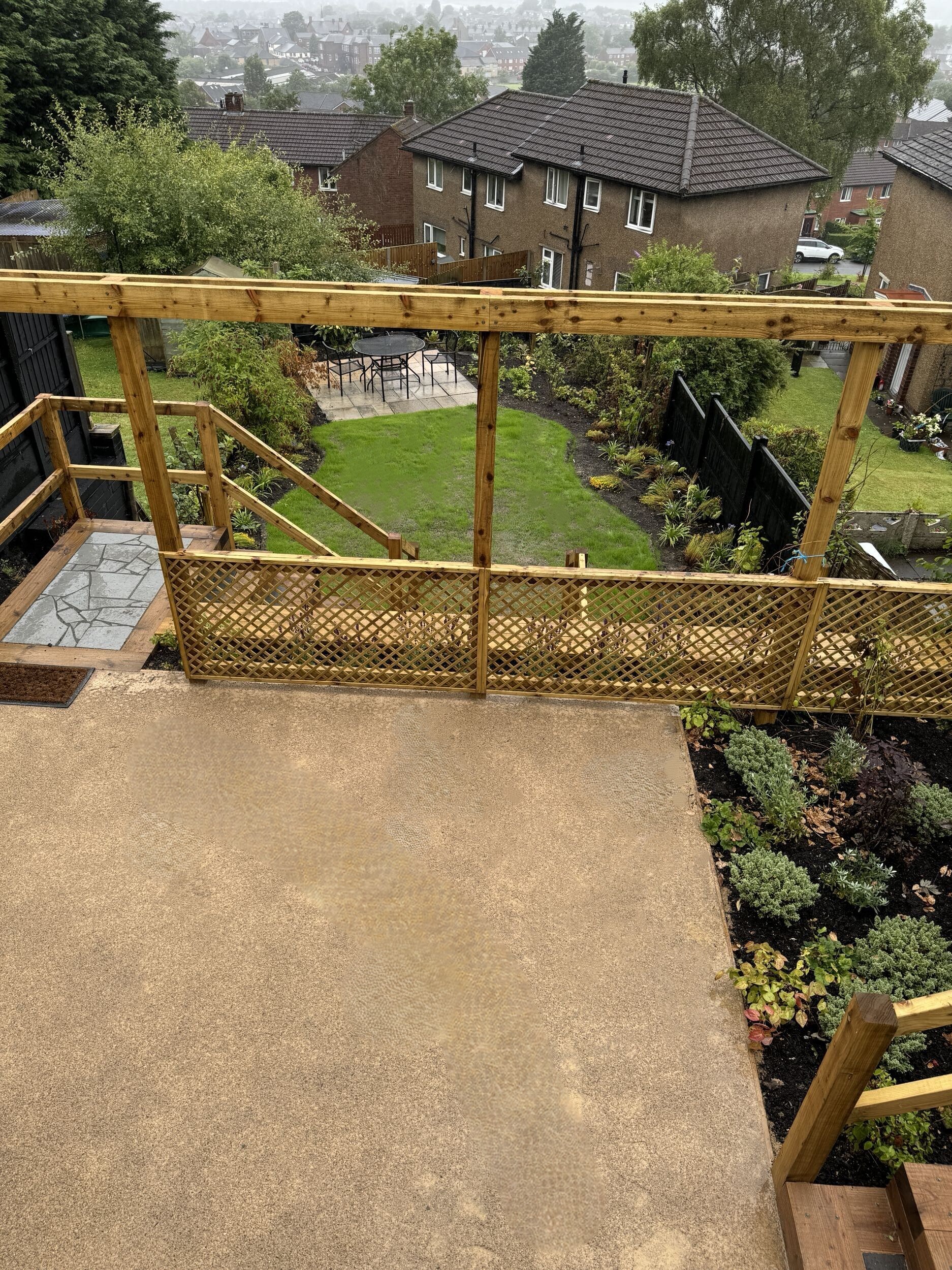A common misconception is that building a new garden is cheap. It’s not! If you think about the amount of money you would spend on a new kitchen – not only the units and worktops but plastering the walls and ceiling, new lights, appliances, electrics, flooring… and now compare the size of a kitchen to a garden! But once you have decided on a garden makeover, what do you need to consider?
The first step is usually budget, and within your budget what are your must-haves? Hard landscaping elements such as paving, decking, fencing, pergolas, fire pits etc have a significant impact on the cost of a garden. The more soft landscaping you include (eg turf), the more you can often reduce the cost. Soil movement incurs plenty of labour, often machine hire and sometimes removal via skips or grabs, all of which push the cost up. As any local garden designer will tell you, too often people remove good soil that can be reused!
Are there any features of the garden you want to retain? This could be a physical attribute such as a pergola, water feature or shed, or something intangible like a view of rolling hills or stunning sunset. Clients sometimes lean towards removing existing features of the garden that could easily be worked into the new design, to reduce waste and carbon footprint. All good landscape architects will be keen to maximise the potential of the garden by incorporating the existing positives.
Once you have worked out how much you are happy to spend on your garden, and what key features you want to keep, include or source, it’s time to start considering other criteria such as aspect, privacy and boundaries. If you have lived in the property for less than twelve months you won’t yet know the full movement of the sun throughout the year. Understanding this is key to making the most of sun spots and shaded areas. For larger gardens you may wish to include three seating areas: morning, afternoon and evening. If you don’t have the space for three separate fixed areas, allow yourself some flexibility, for example a lawn that enables you to move a chair into the path of the setting sun.
Try not to worry too much about being overlooked by neighbouring bedroom windows. Often this is unavoidable and many people are put off by it. But realistically, how much time do YOU spend in your bedroom looking out of the window? It isn’t always the catastrophe it seems.
Boundary definition is an important part of the design of the garden. People can be so quick to remove hedging in favour of fencing, thinking it will be lower maintenance, however a fence can cost more in the long run with regular painting or oiling, and replacing rotten panels. A well-chosen hedge such as privet, beech or hornbeam can be cut back all the way to ground level if unwieldy, and will regenerate. These make excellent options for small-to-average-sized gardens. Avoid conifers at all costs: although cheap to buy and quick to grow, they can’t easily be cut back once they have become out of control and their roots can cause not only damage to fences but disputes with neighbours!


And two of the most forgotten objects to consider perhaps seem the most insignificant: wheelie bins and washing lines! Even the most breathtaking designs can be ruined by the sight of your smalls hanging out to dry, or a row of brightly coloured plastic bins on display! If you consider these in the initial layout and design process, you avoid the disappointment of admiring the final garden construction, only to turn around and see the bins and the washing waiting patiently for their position in your relaxing space.
A well designed and well built garden should last 20-25 years before you have to think about re-purposing it. Latest trends and the quality of the materials used will dictate a garden’s durability. The easiest place to start is with your focus points, access points and sitting areas. Once these have been decided, dress the areas with lawns and planting. Finally, accent with lighting.
The general rule of thumb is that the simpler the layout and the easier the garden is to maintain, the longer it will last. With the recent boom in larger items such as garden buildings, shelters, fire pits and bars, more and more people are using their gardens year-round rather than just in the summer. If you intend to do the same, consider how serviceable the garden will be throughout the year and make sure your key features are showcased to their fullest potential. A good garden designer will take all of your requests on board and work with you to come up with ideas that combine practicality with the wow-factor, creating a garden that will not only look stunning but stand the test of time.





